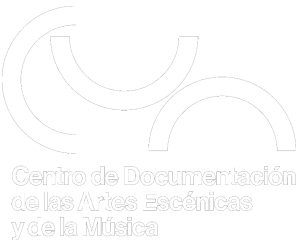Serge Lifar selected criticism André Levinson; translated by Clement Crisp
Tipo de material: ArtículoDetalles de publicación: 2002 Edinburgh: Edinburgh University Press,Descripción: 11 páginasTema(s):
En: Dance Research Vol. 20, núm. 2, Winter 2002, p. 16 - 26Resumen: RESUMEN: The influential critic André [Andrey Yakovlevich] Levinson (1887-1933) was born in St. Petersburg, where he began his career as a writer and critic and, significantly, became Professor of French Literature in the Imperial University. He was steeped in the history of the Imperial Ballet, and was no admirer of certain of Diaghilev's innovations (he wrote coolly about the early Paris seasons of the Ballets Russes). In 1919 he and his family fled Russia, and two years later he was installed in Paris. Here he continued to work, as a lecturer at the Sorbonne and as a critic, writing both in Russian and French. On his deathbed he corrected the proofs of Les Visages de la danse, a final book of criticism which provides fascinating aperçus about many types of dancing as the 1920s gave way to the 1930s. A study of Lifar appeared posthumously. These extracts from his criticism provide fascinating testimony to the impact Lifar had at the very beginning of his career at the Opéra and to the early development of his choreographic style.
ArtículoDetalles de publicación: 2002 Edinburgh: Edinburgh University Press,Descripción: 11 páginasTema(s):
En: Dance Research Vol. 20, núm. 2, Winter 2002, p. 16 - 26Resumen: RESUMEN: The influential critic André [Andrey Yakovlevich] Levinson (1887-1933) was born in St. Petersburg, where he began his career as a writer and critic and, significantly, became Professor of French Literature in the Imperial University. He was steeped in the history of the Imperial Ballet, and was no admirer of certain of Diaghilev's innovations (he wrote coolly about the early Paris seasons of the Ballets Russes). In 1919 he and his family fled Russia, and two years later he was installed in Paris. Here he continued to work, as a lecturer at the Sorbonne and as a critic, writing both in Russian and French. On his deathbed he corrected the proofs of Les Visages de la danse, a final book of criticism which provides fascinating aperçus about many types of dancing as the 1920s gave way to the 1930s. A study of Lifar appeared posthumously. These extracts from his criticism provide fascinating testimony to the impact Lifar had at the very beginning of his career at the Opéra and to the early development of his choreographic style.
RESUMEN: The influential critic André [Andrey Yakovlevich] Levinson (1887-1933) was born in St. Petersburg, where he began his career as a writer and critic and, significantly, became Professor of French Literature in the Imperial University. He was steeped in the history of the Imperial Ballet, and was no admirer of certain of Diaghilev's innovations (he wrote coolly about the early Paris seasons of the Ballets Russes). In 1919 he and his family fled Russia, and two years later he was installed in Paris. Here he continued to work, as a lecturer at the Sorbonne and as a critic, writing both in Russian and French. On his deathbed he corrected the proofs of Les Visages de la danse, a final book of criticism which provides fascinating aperçus about many types of dancing as the 1920s gave way to the 1930s. A study of Lifar appeared posthumously. These extracts from his criticism provide fascinating testimony to the impact Lifar had at the very beginning of his career at the Opéra and to the early development of his choreographic style.
No hay comentarios en este titulo.

